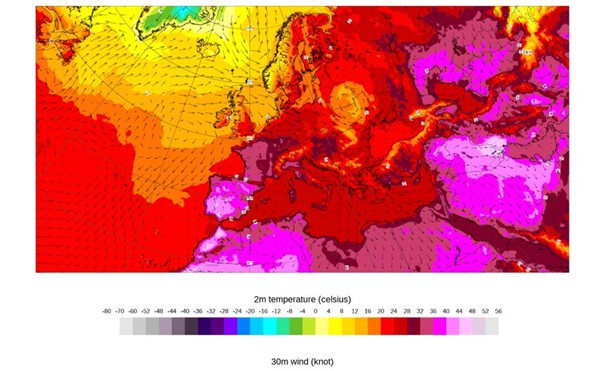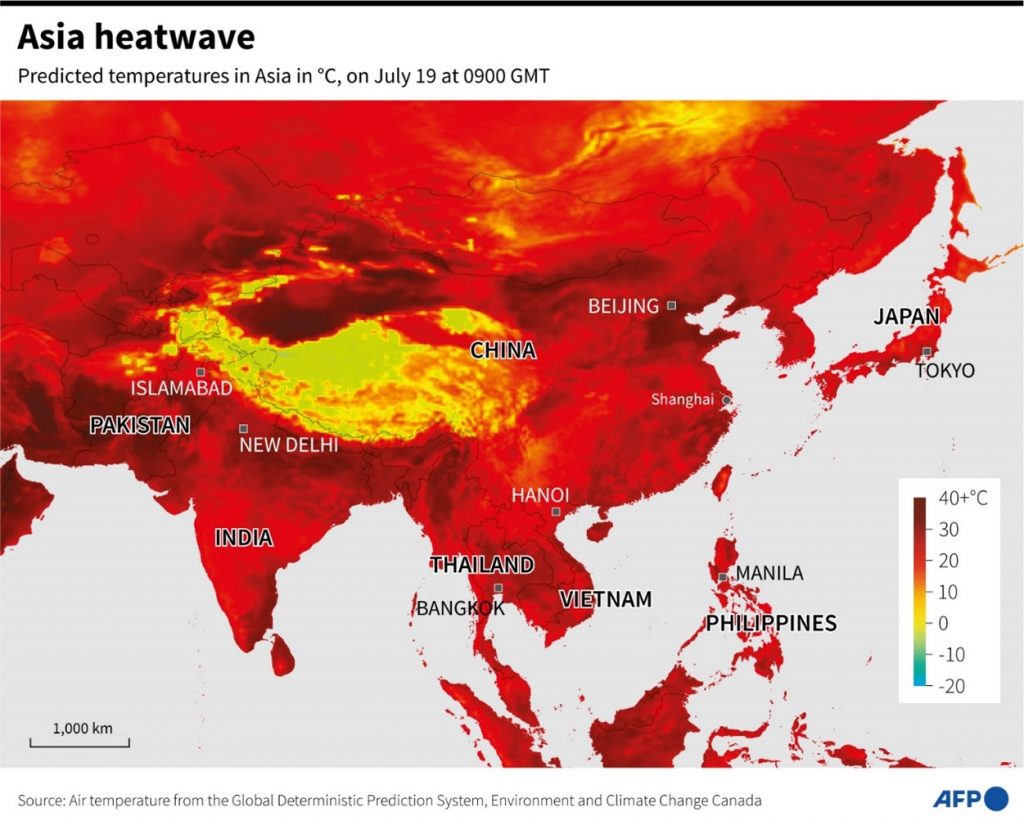Livestock’s comfort with the last scorching heat on the Northern Hemisphere
The last July, the thermometer has reached unprecedent level in Europe, the United States and parts of Asia. What about the impact on livestock’s health and performance?
Suffocating temperatures has been recorded in Europe, the U.S. and parts of Asia
July 2023 Recorded Earth’s hottest week ever. In Europe, the Cerberus heatwave has resulted in temperatures of more than 44°C. Parts of Southern France experienced temperatures often more than 35°C — and up to 40°C in some areas. Likewise, large part of Spain was in alert with areas of the southern Guadalquivir Valley, around Córdoba and Seville, could reach 46°C to 47°C on the 11th of July. Across the Mediterranean Sea, North Africa recorded some of the hottest temperature worldwide, with 47.7°C on Chelf region in Algeria and 46.9°C in Tozeur, in the Southwest of Tunisia, on the 18th of July. Asia was also hit with this heat wave. For instance, six cities in India’s north and eastern regions recorded temperatures above 44 °C.


READ MORE. Assess your local risk thanks to the THI
What impacts on animals’ health and performance can we expect?
The extreme weather is known to have a major impact on animals’ health. While it is too early to get the precise numbers of the impacts of July heatwaves, we can get a first assessment based on last summer aftermath. In poultry, during a massive heatwave in the Western part of France, a total of 1500 tons of dead animals were estimated to be collected over 130 farms over one day, this accounts for 12 tons of losses in one day on average per farm. In swine, a classical decrease in the slaughter weight is observed over the summer period. However, based on UNIPORC French slaughter professional organisation, this decrease was worsening in 2022 compared to 2021 with a loss of 0.83 kg over the summer months. And finally, last summer had massive impact on milk production in dairy cows, with a production lower by 107 kg/cow/month in the Western part of France. With the right protection against heat stress, these detrimental effects can be alleviated.
READ MORE. Take action with the Thermo® range



